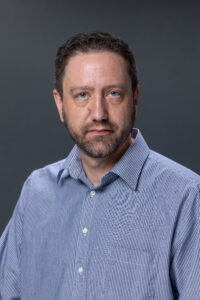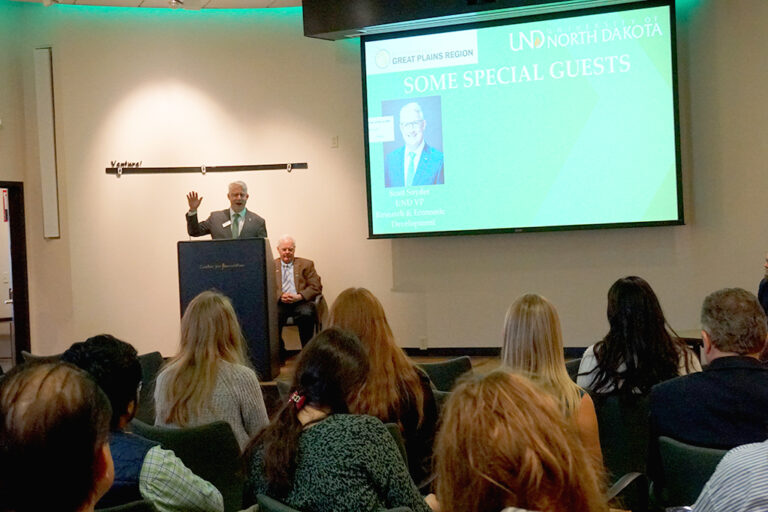Partnerships, other financing innovations fuel campus rebirth at UND
University’s ‘entrepreneurial’ approach looks for multiple funding sources in effort to minimize cost to state
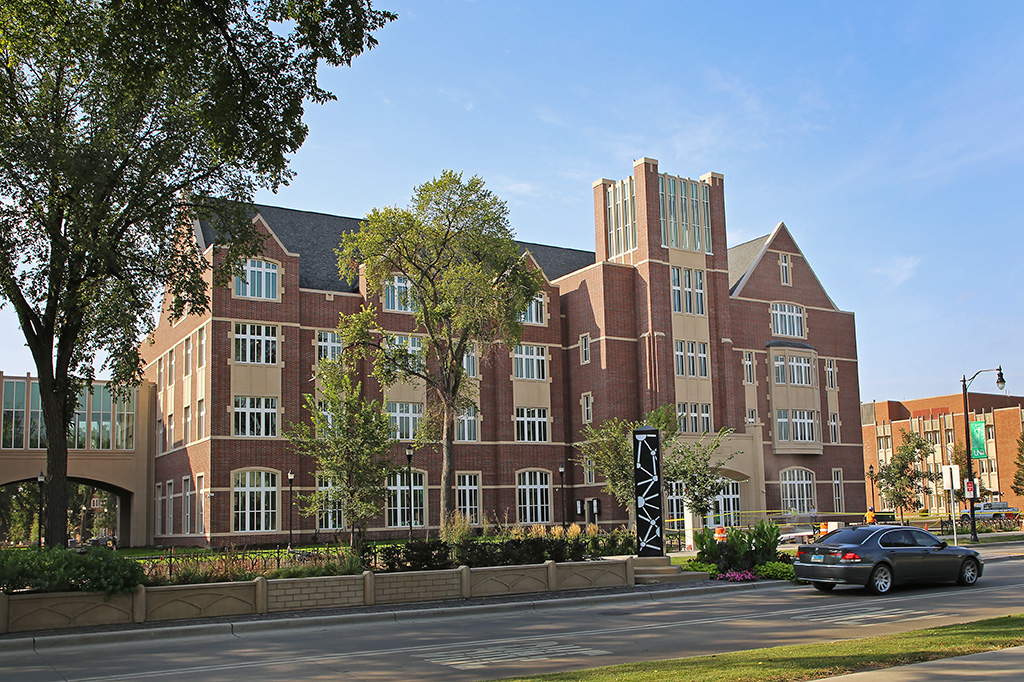
When it comes to paying for new buildings or remodeling old ones on a North Dakota University System campus, universities may soon have to have some financial skin in the game.
Luckily for UND, the University adopted that approach years ago — and, despite a very challenging environment for higher education financing, now has tens of millions of dollars in new construction to show for it.
H.B. 1034 is the bill that would make such an approach a requirement. The bill was introduced on Jan. 3 and has been referred to the House Appropriations Committee. Among other stipulations, it would require UND and North Dakota State University, the state’s two research institutions, to come up with 30% of the estimated cost of a capital project request — a new building, for example, or the overhaul of another — before submitting a request for funding to the Legislature. Other state institutions would be responsible for either 20% or 10% of the cost of a project.
The potential new funding law means NDUS institutions need to look closely at how capital projects are paid for, instead of approaching the Legislature and asking for total funding.
For UND’s part, the University continues to make use of several different funding models for capital projects, including generous support from donors. Donor-provided funds also have been used to unlock extra state funding in the form of matching state grants. A public-private partnership resulted in the creation of the new steam plant, the construction of was completed without taxpayer dollars. Several other projects are also the result of ‘P3’ programs. “Local money” — funds raised through tuition and student fees — also contribute to capital projects, as do other partnerships, such as with the city of Grand Forks.
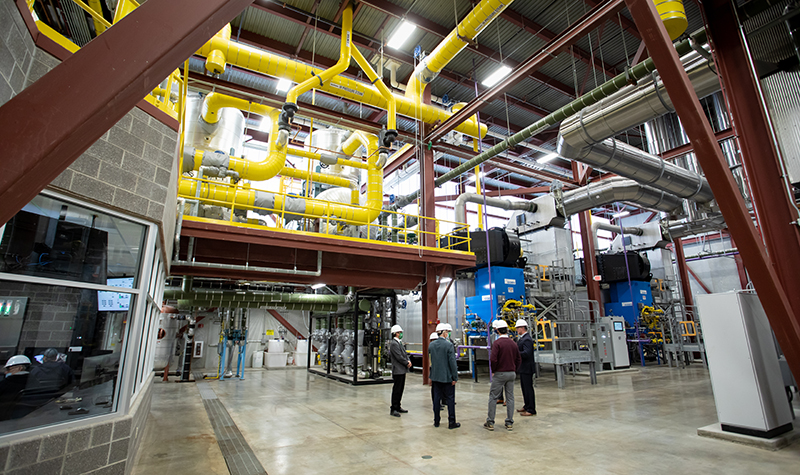
Mike Pieper, associate vice president of facilities at UND, said the national trend in higher ed of becoming more self-reliant for capital funding accelerated after the Great Recession, which started in late 2007 and continued halfway through 2009. State legislatures at that time took a more enlightened look at the needs of higher education, in terms of enrollment and the condition of a university’s facilities.
Speaking broadly of that national trend, Pieper said: “Because of that enlightenment, higher ed has reacted to say ‘OK, we need to answer these questions, like why do we have so much deferred maintenance or why are we asking for new square footage when enrollments are going down?’”
Bucking the trends
According to the 2022 Gordian State of Facilities in Higher Education report, “Growth continues to outpace enrollment, adding to operating and capital renewal burdens. Space is expanding at a time when our experimentation with remote learning is exploding, up as much as 150% during the pandemic.” (Editor’s note: The publication provides data about construction costs for all stages of a building’s life cycle. The report can be downloaded here, after inputting contact details.)
But that phenomenon is not the case at UND. Over the past five years, the University has worked to reduce its physical footprint. Buildings including the Strinden Center, Montgomery Hall, Corwin-Larimore Hall and several other low-density apartments on the western end of campus have been taken down, an action that reduces operating costs and removes deferred maintenance costs.
In a November interview with the Grand Forks Herald, Karla Mongeon-Stewart, vice president of Finance & Operations, said UND has eliminated more than 1 million gross square feet in facilities, resulting in the reduction of $230.7 million in deferred maintenance costs. With obsolete buildings off the books, and with other buildings such as Gamble and Columbia halls awaiting similar outcomes, UND has invested 1% of its tuition revenue into a deferred maintenance fund that can cover repairs in the event of a budgetary shortfall.

Another trend UND has defied has been in enrollment. According to an October NPR report, undergraduate and graduate enrollments nationwide have been declining by about 1% per year since 2012. In mid-2020, the coronavirus pandemic “turbocharged the declines at the undergrad level” (though drops in student numbers have resumed at a more moderate pace).
UND, in contrast, is now at a five-year-high for enrollment. Reasons for moving the needle northward include an increase of transfer students, particularly in areas such as Aerospace. The University also has taken strides to grow and improve access to online classes.
In bucking those trends, UND has shrunk its footprint while still adding new facilities. Another example at the Grand Forks Airport is the proposed new flight operations building, a single building that will replace three buildings which are at the end of their life cycles. The new facility will be characterized by a net reduction in square footage while making a state-of-the-art building available for the students. Fundraising is underway for the planned building.
The billion-dollar hole
In speaking with UND Today, Rep. Mark Sanford, R-Grand Forks, recalled that about a decade ago, the Interim Higher Education Committee received a report outlining the state of deferred maintenance costs across the North Dakota University System. That report, essentially a high-level facilities audit, found that costs topped $1 billion. It was, he said, an “eye opener” for higher ed administrators and legislators alike.
The Legislature subsequently took steps to address those costs by asking the State Board of Higher Education to prioritize projects for each campus that can be considered for funding and by implementing a three-tiered system that campuses can use to unlock additional state funds for deferred maintenance. Campuses can be given access to that pool of dollars provided they raise matching funds.
But it ultimately is a combination of reducing unneeded space and buildings, combined with diverse funding mechanisms that can help universities care for and replace their facilities when needed, which Sanford said he has seen evidenced on the UND campus.
“They have been very, I would say, entrepreneurial in the approaches that they’ve taken to funding and right-sizing,” Sanford said.
A major example of that attitude would be UND’s new steam plant. Dedicated in October 2020, the $75 million plant was built in partnership with Johnson Controls, at no cost to the taxpayer. The more efficient facility delivers more than $1 million per year in steam savings and lower repair costs.
At that time, Sanford, who attended the dedication event, called the building and UND’s innovative approach to paying for it “a cornerstone of the entire university system.”
Casey Ryan, chair of the State Board of Higher Education, said the board needs to find a balance between the needs of the research institutions and the other nine institutions in the North Dakota University System. While offering praise for capital funding efforts at UND, Ryan said it is up to the board to rank the various projects that need to be undertaken at each institution.
“I think (UND) has definitely been a leader and had bigger projects, but the state has limited resources with a lot of people wanting those resources,” he said.
The board and its Budget and Finance Committee need to consider several different factors when deciding when to sign off on a project, such as its overall plan, its history on campus and how alumni might react to changes. Financing plans need to be in order as well, and that means having an institution show some skin in the game.
“You have to show that the campus is supporting it,” Ryan said. “You can’t just go with a tin cup and say ‘Hey, we need more money,’ because, again, it’s limited.”
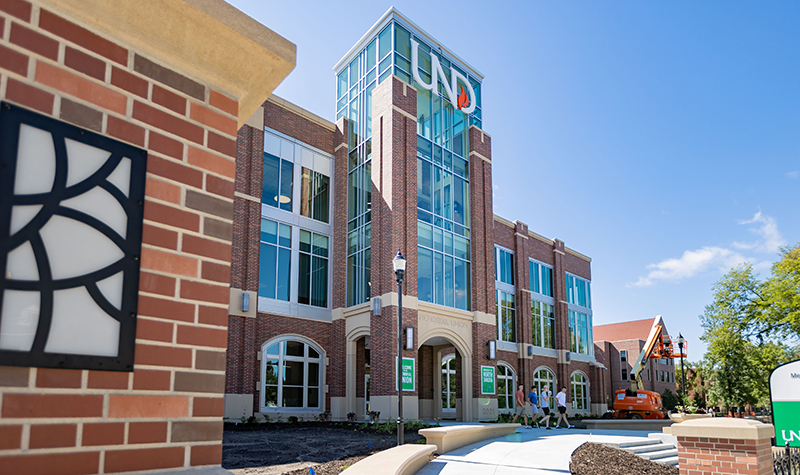
Examples of how capital projects at UND have been funded:
- Nistler Hall is a product of both public and private partnerships. Of the latter, Werner and Colleen Nistler took the lead with a generous gift of $20 million for the building’s construction. Dozens of other donors also contributed, and the state appropriated $20 million for the project.
- The renovation of the Gershman Graduate Center was made possible by a $3 million gift from Hal and Kathy Gershman. The gift qualified for a state matching grant, making a total of $4.5 million available for the historic renovation and remodeling of the house.
- The new Memorial Union opened in summer 2021 and is being paid for by increases in student fees. In 2018, UND students voted in support of that increase to fund the project.
Though expectations for funding have changed, universities had had to rely on funding from the state. Examples of legislative appropriations — the traditional model — include building the new medical school and expanding the law school at UND.
